2: What does sound look like?
Sound is all around us. Take a guitar, a piano or a trombone. We can hear it, we can see the instrument, but can we actually see the sound it produces? If you could see sound, what would it look like?
These resources are hand-picked by the TES team

Ear Gongs - Science Museum STEM Activity
This activity from the Science Museum investigates how sound travels, using a kind of gong made from a coat hanger and some string. The gong makes a surprising and intriguing sound – but only when you have your fingers in your ears.
Learning Outcomes:
- Experience that sound is produced by vibrations and travels better through solids than gases
- Use observation and questioning skills
- Understand how sound travels through different materials has useful applications in our everyday lives
Curriculum Links:
KS2 Science: Sound
KS1 &2 Science: Working scientifically
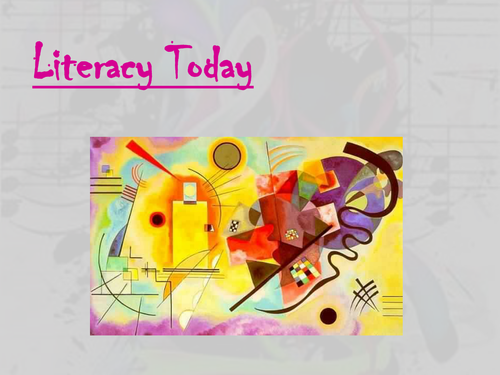
Musical Art project

Hearing sounds
Suitable for Y5 pupils.
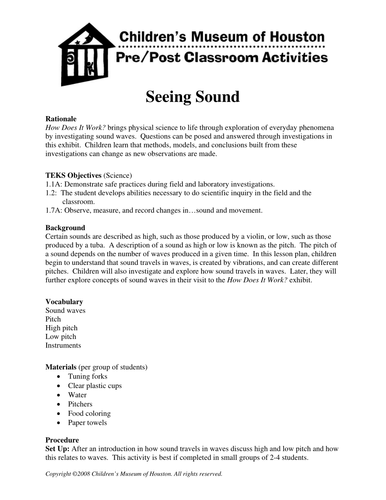
Seeing Sound
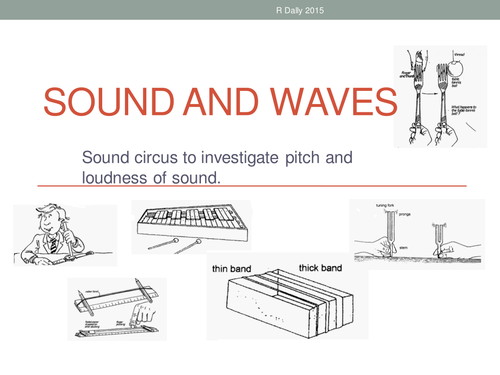
Sound and Waves Circus
11 activities in the circus. Answers provided.
Covers the following areas:
• To identify how sounds are made, associating some of them with something vibrating
• To recognise that vibrations from sounds travel through a medium to the ear
• To observe and record what they see and hear at each station.
• To Find patterns between the pitch of the sound and features of the object that produced it
find patterns between the volume of a sound and the strength of the vibrations that produced it.

Sound and Waves Interactive Notebook
This interactive notebook uses cut and stick activities to help your class learn about sound and waves.
-Investigate …the sound waves produced by different musical instruments
-Describe … the loudness and frequency of each musical instrument
-Explain… how a sound is heard by the ear
-Apply…data to a chart of the hearing range of different animals
-Link… ideas about light and sound to thunder and lightning
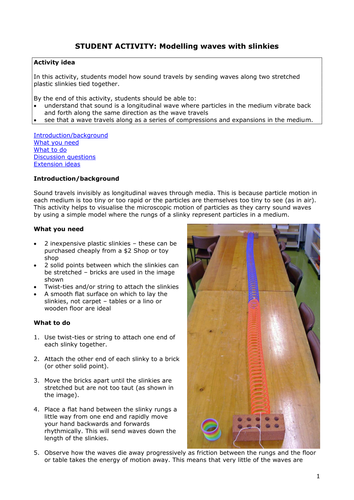
Slinkies and waves activity
In this activity, students model how sound travels by sending waves along two stretched plastic slinkies tied together.
By the end of this activity, students should be able to:
• understand that sound is a longitudinal wave where particles in the medium vibrate back and forth along the same direction as the wave travels
• see that a wave travels along as a series of compressions and expansions in the medium.

Year 4 Science - Sound powerpoints, worksheet, planning and display pack
POWERPOINTS:
LISTENING TO EVERYDAY SOUNDS: Twelve everyday sounds to listen to as an introduction to the topic
HOW WE HEAR: Explains how we hear and looks at different parts of the ear and what happens when sound enters it. It asks questions to encourage the children to think about sound and hearing.
WHAT ARE SOUNDS: Explains that sounds are vibrations, discussing how sounds are made and how vibrations travel through air and through solids. Discusses loud sounds, the effects of wind, and how light and sound travel at different speeds, giving examples.
PROPERTIES OF SOUNDS: Explains pitch and volume; how volume changes with distance but pitch does not unless the source of sound is moving. It ends with an activity to describe a selection of sounds.
THE VOLUME OF SOUNDS: Activity to listen to sounds and think about distance and volume.
MAKING SOUNDS: A look at different musical instruments and how they make sounds. Includes drums, piano, and guitar. Suggests different objects the children cound use to create different sounds.
SOUND - MUSICAL INSTRUMENTS: Pictures of different instruments for the children to look at and work out how they make sounds.
WORKSHEETS:
SOUND CONCEPT MAP: For the children to record what they already know and what they would like to find out
LISTENING TO SOUNDS SHEET: To use on listening activities
TOPIC COVER X 2: With 'Sound' title; one with a picture, the other without.
DISPLAY:
A4 Sound title
A-Z lettering, with Sound title, one letter per A4 page
INVESTIGATION SHEETS:
A set of different sheets for investigations and recording
PLUS a medium term plan with activities and web links
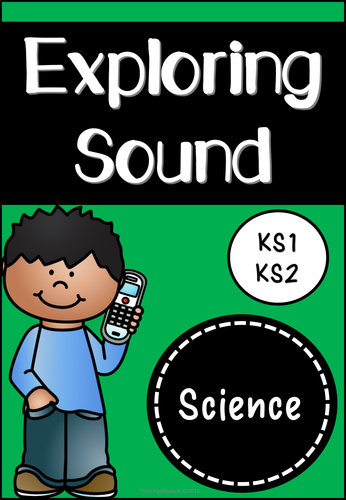
Exploring Sound (KS1/KS2)
Gives a colourful and interesting insight into the world around us.
Students will love these worksheets!
Includes:
Sounds in School
Sounds indoors
Sounds outdoors
Pitch and intensity (hard / soft )
Animal Sounds
Sound Waves
Check out the preview!
Visit our gallery to see what you've discovered

